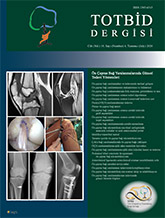
Anterior cruciate ligament tears (ACL) are common orthopedic injuries that most commonly affect young and active patients. Most young, active patients are treated surgically. Patients who are conservatively followed are at high risk for recurrent instability, secondary meniscal tear, osteoarthritis and total knee arthroplasty in the future. ACL reconstruction can be performed using a variety of different surgical techniques as well as different graft materials. There are several intraoperative factors (graft selection, tunnel position, graft fixation angle, initial graft tension, native tissue remnant preservation and concomitant ligament/ meniscus/cartilage injuries) affecting clinical outcomes in anterior cruciate ligament surgery. Among them, graft selection might be the most critical but controversial question for surgeons that can be addressed at the time of surgery. As the primary factor influencing a patient`s choice for the ACL graft is surgeon recommendation, surgeons have to consider several factors to facilitate an informed choice. There is limited evidence to choose the best graft for each patient. Graft selection should be individualized according to multiple factors such as gender, age, activity level and type of activity, graft failure, complications and patient`s expectation. In addition, surgeons must be familiar with a variety of grafts, their specific surgical procedures, and the advantages and disadvantages of each graft to offer the best graft options for each patient.